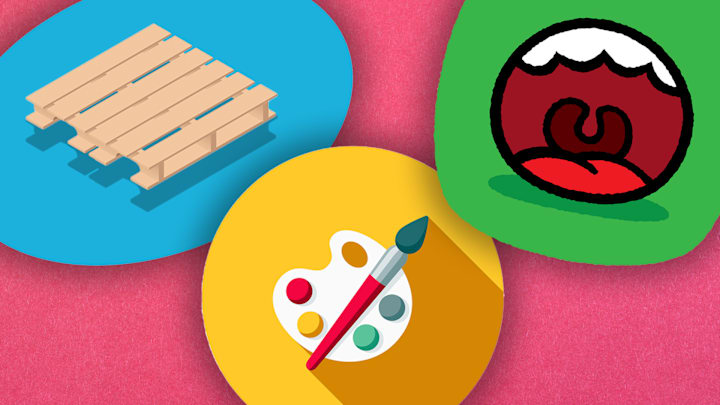Plenty of tricky pairs of English terms can be used interchangeably, even if there are certain subtle differences between them—distrust vs. mistrust, for example. Unfortunately, the triple homophonic whammy of palate, palette, and pallet doesn’t fall into this category.
Palate refers to the literal roof of your mouth; but it’s also used figuratively to describe your sense of taste. The word comes from the Latin palātum, which means the exact same thing. Using palātum as a way to remember that palate is all about taste might not work that well for anyone who doesn’t speak Latin. But if you know how to spell palatable—meaning “pleasant-tasting”—it might help remind you how many l’s and t’s are in palate. Or you could think of palate as palace with a t. After all, palaces famously play host to people with sophisticated palates enjoying lots of fancy food and drink.
Palette also has literal and figurative definitions. Literally, it’s a board that an artist uses to arrange and mix colors while they’re painting. Figuratively, it’s “a range of selection of colors, especially as used by a particular artist or in a particular painting,” per the Oxford English Dictionary, or even a range of any other things in a given category. You could have a palette of styles in your closet or a floral palette for your wedding. Palette is directly borrowed from French—so maybe try to picture Claude Monet picking up some cigarettes and a baguette before heading home to paint with his palette. (He actually did smoke sometimes while painting.)
Pallet, which derives from a fusion of French and Latin, has quite a few definitions. These days, you’re probably most likely to hear the word used to describe a makeshift bed or a flat, portable platform on which cargo is transported or stored. Those wooden platforms underneath stacks of products in IKEA and other warehouses, for example, are pallets. Here’s a mnemonic device for this one: You might need a mallet to construct a pallet.
